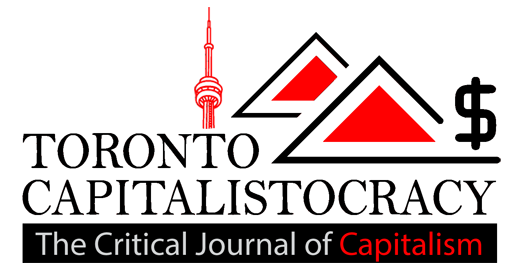Headline News
Trudeau goes bold on emissions; Sheer attacks, but has no plan

The Trudeau government has taken the bull by the horns and imposed a carbon-pricing scheme on four provinces — Manitoba, Saskatchewan, New Brunswick and Ontario — which account for nearly half of Canada’s population.
Other provinces have their own mechanisms consistent with federal carbon-pricing targets. Ontario was one of those others until Doug Ford became premier and cancelled all measures designed to combat climate change. The result for Canada’s most populous province is a projected increase in carbon pollution, by the year 2030, equal to the emissions of 30 coal-fired electricity plants.
As Justin Trudeau’s Liberals promote their greenhouse-gas reduction plan, they point out that three of the cooperating provinces — Quebec, Alberta and British Columbia — are among the top economic performers in Canada. The Liberal message: putting a price on pollution does not kill jobs and growth. To the contrary, they say, taxing pollution actually creates good jobs.
This is a government that was elected on a pledge to focus like a laser on the economic well being of the middle class. And so, even as it takes steps to head off the global catastrophe a United Nations’ climate change panel so recently warned is imminent, the Trudeau government goes to great pains to emphasize its concern for ordinary families and their pocketbooks.
Government documents promoting its carbon-pricing measures offer few figures as to how much tax anyone will pay. What they emphasize is the need to prevent the huge and devastating damage climate change will bring, of which recent events like forest fires in B.C. and heat waves in Ontario and Quebec are mere harbingers.
The government does, on the other hand, go into great detail about the carbon-pricing rebates average families will receive, starting in the spring of 2019. Nearly three-quarters of Canadians, they say, will receive more money back than they will pay in increased fuel costs.
A two-tiered carbon-pricing system
The official opposition Conservatives claim to accept the science that tells us climate change is caused by humans. They even say they will, someday, tell Canadians their plan to reduce greenhouse gases. They are just not quite ready to make that announcement yet.
Instead of telling Canadians what they will do, Conservatives put all their energy into picking holes in the Liberal plan.
Their main line of attack is based on the fact that the government is imposing two types of carbon tax.
There is the levy of $20 per tonne of greenhouse gas, eventually rising to $50, on distributors of fossil fuels. Those distributors will, presumably, pass their increased costs on to consumers.
For large industrial emitters, there is a different mechanism, what they call an output-based carbon-pricing system.
What happens here is that the government sets an emissions limit for each industry. Companies that produce less than the limit pay no tax. Instead, they receive credits based on the difference between the limit and their emissions, which they can trade for cash with companies that produce more than their limit. Those latter companies will have a choice of paying $20 per tonne of emissions to the federal government, buying credits from other companies, implementing carbon offset measures (such as planting trees) – or undertaking a combination of all three.
The Liberals add the important caveat that the entire package of measures aimed at industry is calibrated, in their words, to “minimize competitiveness risks for emissions-intensive, trade-exposed industrial facilities.”
Conservative leader Andrew Sheer and his opposition colleagues have seized on that “minimize risks” part. They argue that the Liberals are giving an unfair special deal to large industrial polluters, while small businesses and ordinary Canadians will have to absorb the full brunt of increased fuel costs.
Conservatives hammers this message daily in the House.
On Wednesday, October 24, Sheer accused Trudeau of protecting “large corporate emitters by giving them a massive exemption from the costs that they will have to pay.” At the same time, he said, “small businesses who will face rising fuel and home-heating costs will have to bear the brunt of his new carbon tax plan.”
The Liberals do not bother answering this argument, which simplifies their complex carbon-pricing regime beyond recognition. Instead, they pillory the Conservatives for their refusal, since the time of the previous Harper government, to commit to any sort of climate-change measure.
As Trudeau put it on Wednesday:
“We are moving forward with putting a price on pollution … something the Conservatives were unwilling and unable to do for 10 years while in government…. They have no plan to approach the fight against climate.… They want to make pollution free again.”
A polarized campaign in 2019 could help Trudeau
The NDP and Greens both offer at least qualified support for the government’s most recent move.
The NDP successfully pushed for an emergency debate on the UN report on climate change, but has held its fire in the House on the most recent developments in the government’s carbon-pricing scheme.
When asked to comment, NDP leader Jagmeet Singh expressed concern over the more than $4 billion the Liberals paid for the Trans Mountain pipeline, suggesting that money could be better invested in alternative energy solutions. He also worried, in a general way, about the impact of carbon taxes on those least able to absorb the increased costs. He did not take issue with the principle of what the government is doing.
Green leader Elizabeth May was all for the most thorough solutions during the recent emergency debate in the House. Among other measures, she called for completely getting rid of internal combustion engines and ensuring energy efficiency and retrofits for every building. The carbon-pricing measures imposed on the four provinces might not be quite so radical, but May was still happy to give the Liberals at least a passing grade, while adding that there is “much more to be done.”
“Adequate carbon pricing is a start,” she said, “but we need to eliminate the use of fossil fuels altogether, especially in the production of electricity.”
When the Liberals last adopted a carbon-tax policy, they called it a “Green Shift.” That was a bit more than a decade ago when Stéphane Dion was leader. It did not work out at that time. The Harper Conservatives lambasted the Liberals for their “tax on everything” and won the 2008 election with an increased seat count.
This time, the Liberals hope public attitudes have changed.
Since they made a point of not changing the first-past-the-post electoral system, having solemnly promised to do so multiple times, Trudeau’s party also hopes a polarized campaign between those who want to save the planet and those who deny science will drive NDP and Green voters into their arms. The next election is a year away.
Karl Nerenberg has been a journalist and filmmaker for more than 25 years. He is rabble’s politics reporter.
Headline News
How Canadian churches are helping their communities cope with the wildfires

As wildfires burn across Canada, churches are finding ways to support their members and the broader community directly impacted by the crisis.
According to the Canadian Interagency Forest Fire Centre, as of June 13, there are 462 active fires across Canada – and 236 of them classified as out of control fires.
Whether it’s through phone calls or donations to community members, here’s how a few churches across Canada are handling active wildfires and the aftermath in their regions.
Westwood Hills, N.S.: St. Nicholas Anglican Church
In Nova Scotia, St. Nicholas Anglican Church and other churches in the area are collecting money for grocery cards to give to families impacted by the Tantallon wildfire.
Right outside of Halifax, N.S., the Tantallon wildfire destroyed 151 homes. More than 16,000 people evacuated the area due to the fire.
The fire is now considered contained, but Tanya Moxley, the treasurer at St. Nicholas is organizing efforts to get grocery gift cards into the hands of impacted families.
As of June 12, four churches in the area – St. Nicholas, Parish of French Village, St Margaret of Scotland and St John the Evangelist – raised nearly $3,500. The money will be split for families’ groceries between five schools in the area impacted by the wildfire.
Moxley said she felt driven to raise this money after she heard the principal of her child’s school was using his own money to buy groceries for impacted families in their area.
“[For] most of those people who were evacuated, the power was off in their subdivision for three, four or five days,” she said. “Even though they went home and their house was still standing, the power was off and they lost all their groceries.”
Moxley said many people in the area are still “reeling” from the fires. She said the church has an important role to help community members during this time.
“We’re called to feed the hungry and clothe the naked and house the homeless and all that stuff, right? So this is it. This is like where the rubber hits the road.”

Headline News
Is it ever OK to steal from a grocery store?

Mythologized in the legend of Robin Hood and lyricized in Les Misérables, it’s a debate as old as time: is it ever permissible to steal food? And if so, under what conditions? Now, amid Canada’s affordability crisis, the dilemma has extended beyond theatrical debate and into grocery stores.
Although the idea that theft is wrong is both a legally enshrined and socially accepted norm, the price of groceries can also feel criminally high to some — industry data shows that grocery stores can lose between $2,000 and $5,000 a week on average from theft. According to Statistics Canada, most grocery item price increases surged by double digits between 2021 and 2022. To no one’s surprise, grocery store theft is reportedly on the rise as a result. And if recent coverage of the issue rings true, some Canadians don’t feel bad about shoplifting. But should they?
Kieran Oberman, an associate professor of philosophy at the London School of Economics and Political Science in the United Kingdom, coined the term “re-distributive theft” in his 2012 paper “Is Theft Wrong?” In simplest terms, redistributive theft is based on the idea that people with too little could ethically take from those who have too much.
“Everybody, when they think about it, accepts that theft is sometimes permissible if you make the case extreme enough,” Oberman tells me over Zoom. “The question is, when exactly is it permissible?”
Almost no one, Oberman argues, believes the current distribution of wealth across the world is just. We have an inkling that theft is bad, but that inequality is too. As more and more Canadians feel the pinch of inflation, grocery store heirs accumulate riches — Loblaw chair and president Galen Weston, for instance, received a 55 percent boost in compensation in 2022, taking in around $8.4 million for the year. Should someone struggling with rising prices feel guilty when they, say, “forget” to scan a bundle of zucchini?

Headline News
The homeless refugee crisis in Toronto illustrates Canada’s broken promises

UPDATE 07/18/2023: A coalition of groups arranged a bus to relocate refugees to temporarily stay at a North York church on Monday evening, according to CBC, CP24 and Toronto Star reports.
Canadians live in a time of threadbare morality. Nowhere is this more obvious than in Toronto’s entertainment district, where partygoers delight in spending disposable income while skirting refugees sleeping on sidewalks. The growing pile of luggage at the downtown corner of Peter and Richmond streets resembles the lost baggage section at Pearson airport but is the broken-hearted terminus at the centre of a cruel city.
At the crux of a refugee funding war between the municipal and federal governments are those who have fled persecution for the promise of Canada’s protection. Until June 1, asylum seekers used to arrive at the airport and be sent to Toronto’s Streets to Homes Referral Assessment Centre at 129 Peter St. in search of shelter beds. Now, Toronto’s overcrowded shelter system is closed to these newcomers, so they sleep on the street.
New mayor Olivia Chow pushed the federal government Wednesday for at least $160 million to cope with the surge of refugees in the shelter system. She rightly highlights that refugees are a federal responsibility. In response, the department of Immigration, Refugees, and Citizenship Canada points to hundreds of millions in dollars already allocated to cities across Canada through the Interim Housing Assistance Program, while Ontario says it has given nearly $100 million to organizations that support refugees. But these efforts are simply not enough to deliver on Canada’s benevolent promise to the world’s most vulnerable.
The lack of federal generosity and finger-pointing by the city has orchestrated a moral crisis. It’s reminiscent of the crisis south of the border, where Texas governor Greg Abbott keeps bussing migrants to cities located in northern Democratic states. Without the necessary resources, information, and sometimes the language skills needed to navigate the bureaucratic mazes, those who fled turbulent homelands for Canada have become political pawns.
But Torontonians haven’t always been this callous.
In Ireland Park, at Lake Ontario’s edge, five statues of gaunt and grateful refugees gaze at their new home: Toronto circa 1847. These statues honour a time when Toronto, with a population of only 20,000 people, welcomed 38,500 famine-stricken migrants from Ireland. It paralleled the “Come From Away” event of 9/11 in Gander, N.L., where the population doubled overnight, and the people discovered there was indeed more than enough for all. It was a time when the city lived up to its moniker as “Toronto, The Good.”
Now, as a wealthy city of three million people, the city’s residents are tasked with supporting far fewer newcomers. Can we not recognize the absurdity in claiming scarcity?




